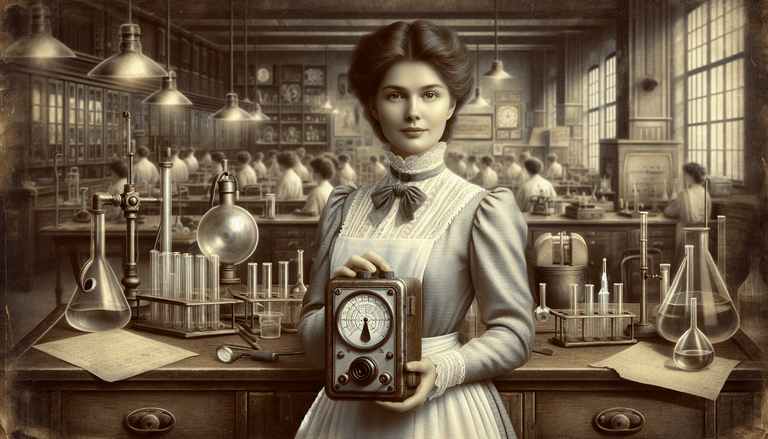Oh, the magic of modern technology! An invention that paves the way for safety could have been a game changer for one fearless scientist. Today, let's adventure into an alternate reality where Marie Curie, the illustrious discoverer of radium and polonium, had but one more tool in her laboratory arsenal: the trusty Geiger counter.
The plot thickens
First, a bit of context for those who've never ventured too far beyond the safety of a modern-day physics book. Marie Curie, a woman of Polish origins and a penchant for radioactive elements, won not one but two Nobel Prizes in an era when women were rarely seen as prestigious scientific contributors. A true pioneer! In our real timeline, Curie's groundbreaking research was famously conducted in rather hazardous conditions, with glowing bottles of radium doubling as impromptu night lights. Charming, isn't it?
Now, picture this: the year is 1898, swirling in the mists of what-ifs, with Marie in her laboratory in Paris, ready to make yet another discovery. She's already accustomed to wearing a lab coat that appears to have more than just sentimental burns, and her students whisper tales of how the skin on her hands was mysteriously darker than any Parisian tan could warrant!
A gauge of genius
And there it is, atop her cluttered desk, amongst papers and peculiar glassware, is a small handheld device ticking away to ascertain levels of radiation – a Geiger counter. Named not after its discoverer, but the whims of historians who, in this reality, had an affinity for puzzles and ironically named inventions. Is it just another gadget among glass tubes and test samples, or is it a proverbial knight in digital armour?
She glances at it with an air of curiosity. What strange device has Comeaux, her fictionally-inserted engineering whizz of an assistant, delivered this time? To ease her doubts, Comeaux explains, "Madame Curie, consider it your magic wand for radioactivity. Hover it over those rocks you're so fond of, and it will sing you the symphony of ionising radiation."
Rock and role
With an instrument to diligently measure the radioactive levels, Curie's perception of radium’s beauty might undergo a transformation more dramatic than any Parisian fashionista of the Belle Époque. Our titan of testing might pause before holding glowing vials without due caution. Picture her running the Geiger counter over a particularly splendid collection of pitchblende (uraninite, for those with fancy mineralogical inclinations), and the device blares louder like a Parisian vendor on a particularly busy market day. Voilà!
No longer would her nights end in an exhausted glow, for the realms of safety would prevail. She'd become the talk of the town with her cautionary glow-down. Letters to colleagues might read, "I find it best to leave some rocks in their rocky flowers; sparkling pretty, but so is molten lava.” Her journal articles would be brimming with phrases like, "Surely tuned by gods themselves, this Geiger counter has pointed my path to safer enlightenment."
Pledging allegiance to precaution
Now, wouldn’t this little modern companion have rewritten an entire legacy? Perhaps paired with a vigorous applause from Pasteur over lunch as he cheerfully notes, “Ah, but of course, it is the cautious scientist who shall endure to discover tomorrow!”
If only ticking tales of the Geiger counter had been spun in her time. Maybe, indeed, healthy precautions would have staved off some tragedies in our alternate history; perhaps even increasing the odds of a radium-free serene stroll in Parisian parks, rather than the life-long radium-sculpting dance she had.
The quirk of fate, the might of measure
O, but let us not allow history to languish in the land of what-ifs without a measure of wit! Were Curie present today, poised with her Geiger counter, perhaps she'd muse, "If only discovering this magical clicking before, I could have invented dancing shoes to match!”
And there we have it, dear readers – a curious twist on the yarn of history. But fret not, in embracing the merry inventiveness of such an image, let us appreciate, with both admiration and a zest for the strange, the wondrous marvels of science mingled with imagination, where history could be a delightful dance of ticking technology and titanic talent.







